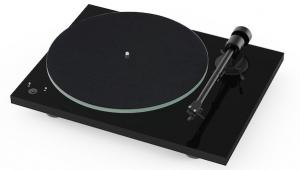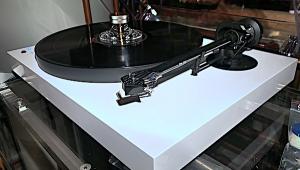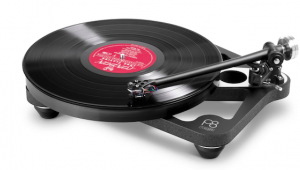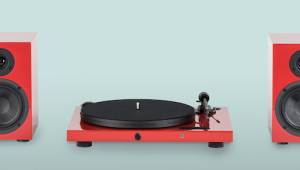geometry dash breeze is an exhilarating addition to the beloved Geometry Dash series, offering players a vibrant and rhythmic platforming experience.
SME Model 30/2 turntable Page 3
Those Sumiko boys listened well, but what I heard provoked as many questions as it answered. Was the Celebration sound I'd originally heard the actual sound of the cartridge, accurately reproduced via the Yorke-Immedia's neutral front-end? Or was that front-end adding "character" to a neutral cartridge? If the former was true, the SME arm/'table combo imparted a lean, bass-subtractive quality to the sound, neutralizing the cartridge's attractively rich qualities. That would play into the hands of the 30/2's detractors, who say it sounds "antiseptic," unable to convey the "tune" (the Linn Sondek's most oft-cited positive attribute). Which was it?
Some CD-Rs I'd made using the Rockport and the Boulder 2008 phono preamplifier (though not at the same time) were somewhat helpful in answering this question. Too bad I no longer had the Boulder available, but the combination of Manley Steelhead and Model 30/2 was quietly spectacular, even in comparison to nothing but real live music.
Using the SME 30/2 was a consistent pleasure. Once set up, it stayed that way, requiring no further fiddling or maintenance. I divided my listening time between the SME and the budget 'tables surveyed in the January and February 2003 installments of "Analog Corner" (losing SME time hurt!), and the single biggest difference noted between any of those budget 'tables and the SME was the 30/2's pitch-black backgrounds. More than just the welcome silence, dropping the noise floor to free-fall levels had the effect of dramatically upping the dynamic range. No CD player I've ever heard matched the dynamic capabilities of the SME 30/2—I don't care what the specs say.
An electrical engineer named Ronald Baumann wrote a paper someone sent me, arguing that a proper reading of analog vs digital specs confirms what vinyl enthusiasts hear: LPs do have wider dynamic range. But that's for another discussion. For this one, thanks in part to its superbly quiet, ultra-low-tolerance bearing, the 30/2 delivered the quietest jet-black backgrounds I've heard yet from a turntable. Only the Rockport System III Sirius offered competition.
Antiseptic?
Perhaps if you're used to and comfortable with such typical turntable colorations as midbass warmth induced by plinth vibrational energy, and upper-frequency sparkle caused by microvariations in speed and/or spring-suspension resonances, you might find the SME Model 30/2 "antiseptic," as its detractors claim. What I experienced was—along with the Rockport System III Sirius—the most neutral, colorless, stable, and revealing turntable I've (n)ever heard. This 'table ruthlessly revealed less-than-perfect cartridge alignment; until this was correct in every parameter, the sound could be cold, off-putting, relentless—like bad digital. But blaming the turntable for delivering the message is ridiculous. Once the setup of any of the cartridges I auditioned had been corrected, the 30/2 delivered the glories of great analog you'd expect and demand from a $25,000 turntable. Remove the turntable colorations, and the sonic differences among cartridges and arms are clarified and magnified.
Rock-Solid Bass
Bass control, definition, extension, dynamics, and harmonics were better through the SME 30/2 than through any other turntable I've ever heard, including the Rockport. This is the one place where the SME had a decisive edge. Image solidity and textural clarity in the bottom octaves were unsurpassed by a wide margin in my experience—which includes the Boulder-Yorke combo, and the Yorke is damn good on the bottom. You have to experience a familiar, well-recorded timpani thwack through the SME to understand what I'm talking about.
Spectacular Attack!
Most obvious among the SME Model 30/2's many strong suits were its transient speed and attack. Like the Rockport, the 30/2's rendering of the piano on even mediocre recordings was in another league compared to every other 'table I've heard (though my reference Simon Yorke is very good in this regard). Attack and control of the piano's lowest notes was rock-solid, creating a strong rhythmic foundation for the notes in the middle and at the top of the keyboard. Post-attack, the 30/2 delivered the piano's harmonics with greater clarity, solidity, and seamless integration than any other 'table I've heard—and that includes via the Rockport.
The 30/2 delivered individual piano notes with a physical palpability that made each an event worth noting—something often heard in concert, but rarely on records. What the Boulder 2008 had managed electronically the SME accomplished mechanically. What the two together would deliver, and whether it would be positive, I can't say. Analogue Productions' 45rpm edition of Bill Evans' Waltz for Debby (AJAZ 9399) delivers the piano cleanly, minus the usual boxiness and fog. Via the SME, this recording had a physical solidity and harmonic richness I didn't think could possibly be on the tape. The set had arrived after the SME, so I needed to go back to the 33 1/3 edition to determine how much of what I was hearing was the record, how much the turntable. The 33 1/3 version, while not as good, was far more impressive than I remember it being, so accomplished was the SME's speed stability and lack of coloration.
Glorious Decay, No Zippy Edge
With its exceptional speed stability, apparent lack of mechanical resonances, quiet bearing, and superb isolation, it was no surprise that the SME 30/2 produced exceptionally solid, stable images—but those qualities also helped the 'table to deliver believable decay and noticeably low harmonic coloration. Like a low-resonance, flat-response loudspeaker, on first listen the SME 30/2 could sound soft and muted on top, and lacking in detail resolution (but if the cartridge was poorly set up, it could sound bright, hard, and unpleasant). Once I'd adjusted to the 30/2's apparent lack of high-frequency resonances, I realized I was hearing more harmonic and event details, and fewer of the edgy peaks that induce false details.
- Log in or register to post comments





















































